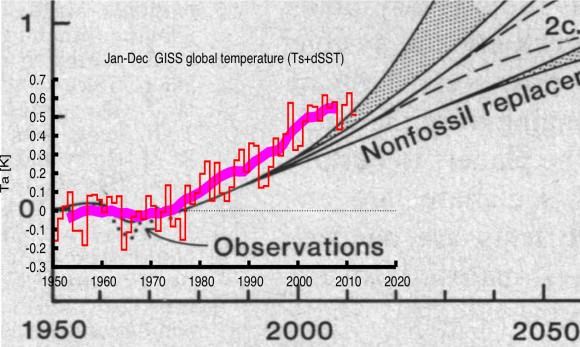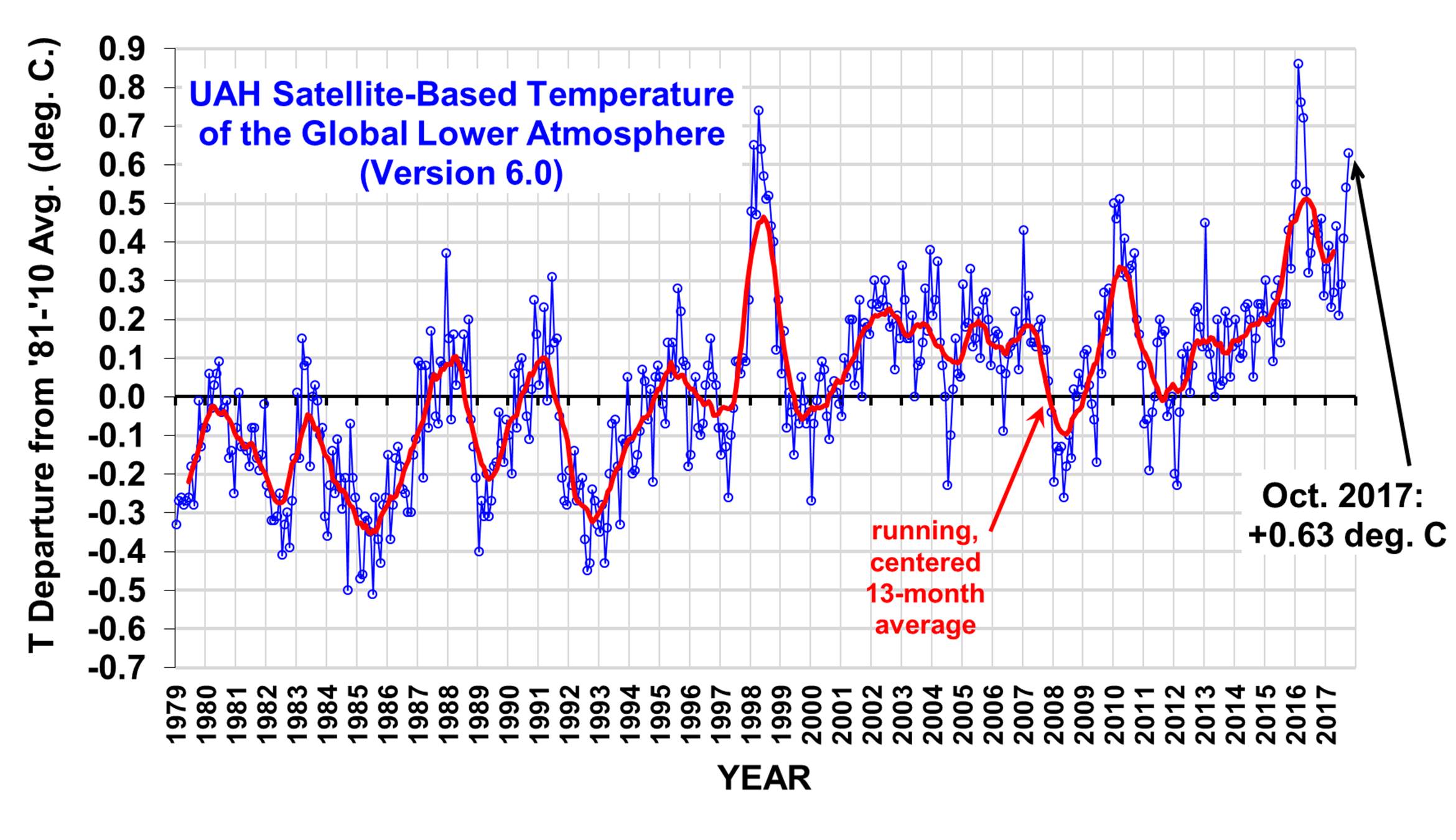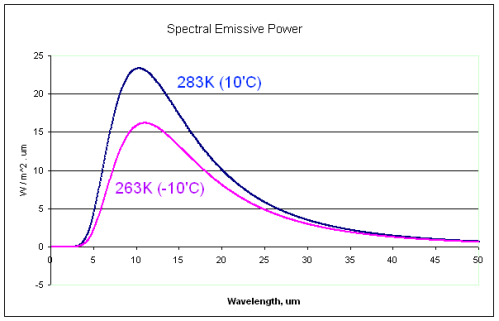Are they now? There prediction for the melt in the Arctic was way to conservative. The alpine glaciers have been melting faster than predicted. Many of the occurrences predicted for the end of the 21st century have already happened.
1981 Climate Change Predictions Were Eerily Accurate - Universe Today
Even though the paper was given 10 pages in
Science, it covers a lot of advanced topics related to climate — indicating the level of knowledge known about climate science even at that time.
“The concepts and conclusions have not changed all that much,” van Oldenborgh and Haarsma note. “Hansen et al clearly indicate what was well known (all of which still stands today) and what was uncertain.”
Within the paper, several
graphs note the growth of atmospheric carbon dioxide, both naturally occurring and manmade, and projected a future rise based on the continued use of fossil fuels by humans. Van Oldenborgh and Haarsma overlaid
data gathered by NASA and KNMI in recent years and found that the projections made by Hansen et al. were pretty much spot-on.
If anything, the 1981 projections were “optimistic”.

Data from the GISS Land-Ocean Temperature Index fit rather closely with the 1981 projection (van Oldenborgh and Haarsma)
Hansen wrote in the original paper:
“The global temperature rose by 0.2ºC between the middle 1960’s and 1980, yielding a warming of 0.4ºC in the past century. This temperature increase is consistent with the calculated greenhouse effect due to measured increases of atmospheric carbon dioxide. Variations of volcanic aerosols and possibly solar luminosity appear to be primary causes of observed fluctuations about the mean rend of increasing temperature. It is shown that the anthropogenic carbon dioxide warming should emerge from the noise level of natural climate variability by the end of the century, and there is a high probability of warming in the 1980’s. Potential effects on climate in the 21st century include the creation of drought-prone regions in North America and central Asia as part of a shifting of climate zones, erosion of the West Antarctic ice sheet with a consequent worldwide rise in sea level, and opening of the fabled Northwest Passage.”



